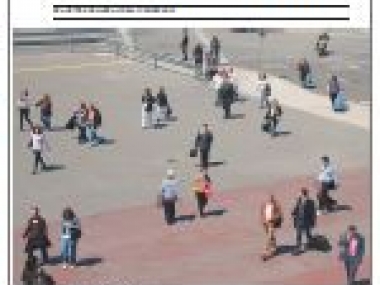How do cities improve quality of life by motivating mobility mindsets
Edited on
09 October 2017What is our vision of urban mobility? What is the definition of quality and sustainability with regards to mobility? How do cities define and carry out long term mobility strategies that will deliver on climate goals and maintain competitiveness? How can smart mobility boost European economic growth? These are the challenges tackled by the URBACT Workstream "Mobility mindsets" team. The article "![]() Download The Urbact Tribune Article Motivating Mobility Mindsets Thematic Paper (798.13 KB)" written by Anette Enermark and Sally Kneeshaw, Lead Expert of the URBACT EVUE project, presents the first findings of their work.
Download The Urbact Tribune Article Motivating Mobility Mindsets Thematic Paper (798.13 KB)" written by Anette Enermark and Sally Kneeshaw, Lead Expert of the URBACT EVUE project, presents the first findings of their work.

Motivating Mobility Mindsets: what does that mean?
The authors the article explain that the idea is to concentrate less on the technical solutions that allow people to be able to choose greener mobility solutions, such as bike and public transport and focus more on a complementary axis: the perception of mobility that has to be embedded in the minds of everyone – individually and collectively – who has a role in changing the mobility of the future, such as mayors and local committee leaders, businesses of all kinds, urban planners, transport planners, environmentalists, safety and health care professionals, and of course the end users, whose citizen power has the potential to drive changes in their daily mobility.
Pieces of the mobility puzzle
According to Anette Enermark and Sally Kneeswhaw “creating Mobility Mindsets requires long term vision, commitment and continuity from politicians, urban planners and across all stakeholder groups. To underpin the vision we have to create a better understanding of what mobility means and better grasp the means and tools by which we can influence mindsets.”
The aim in this workstream has not been to complete the full puzzle, but to highlight some of the many pieces, or actions, that make up the puzzle:
- Exploit the tried and tested solutions and maximise the transfer
- Connect perceptions of mobility and quality.
- Target the communications.
- Create the conditions for win-win situations.
Ways of greening mobility
Policy measures to promote greener mobility must work in combination to be efficient and include both soft and hard measures. Mobility patterns can be influenced by measures encouraging citizens:
- Avoid travel e.g. by providing good internet access, by promoting teleworking, or by toll or road pricing, and by decreasing mobility through synergy with urban planning.
- Travel by greener modes through campaigns and promotion of public transport, cycling, carpooling. But also ensuring high quality of green modes, such as rivers, lakes as reinvented surfaces for cost-efficient ferry based urban mobility (e.g. Paris, London, Budapest, Bordeaux…).
- Travel by cleaner modes by the promotion of electric, hybrid, biofueled and other greener alternatives in cars and city distribution.
- Travel less, or in less congested times by promoting incentives to teleworking and work-at-home and differentiated parking fees, public transport fares and road pricing.
Join the challenge
Changing behaviour and habits for this new mobility thinking can be motivation by consciousness or motivation by economic/financial incentives or both.
The authors of the article explain that cities can use a mixture of carrots and sticks, and this will vary according to city specific contexts. Part of the challenge is to define a common platform, or the same language and understanding so that the Motivating Mobility Mindsets slogan and its content is relevant and helpful in all European cities.
"The starting point for change can be small steps. We need to find good ideas, try to realise projects based on the ideas and try to transfer the knowledge for others. Others will get the most relevant points from these projects as useable ideas for themselves. Cities can apply motivated mobility mindsets as the key to unlock the door: to more effective communication, to better transfer of transport solutions, to collaborations that solve multiple urban needs."
Anette Enermark and Sally Kneeswhaw conclude "We need all city stakeholders to be actively engaged in Motivating Mobility Mindsets!"
Read more:
 Download The Urbact Tribune Article Motivating Mobility Mindsets Thematic Paper (798.13 KB) - PDF
Download The Urbact Tribune Article Motivating Mobility Mindsets Thematic Paper (798.13 KB) - PDF Download The Tribune 2012 (6.81 MB) - PDF
Download The Tribune 2012 (6.81 MB) - PDF
Submitted by admin on
